Situated outside the village of Keenagh in Co Longford, the O’Halleran family currently milk 85 cows as part of an indoor robotic milking system which is run alongside their poultry enterprise consisting of 16,500 free-range laying hens.
Having witnessed firsthand the benefits of an automatic feeder pusher, the family invested in a Lely Juno in August 2021.
Background
The O’Halleran farm is very much a family-run business involving Derek and his wife, Shirley, alongside their son and daughter, Keith and Rebecca. Prior to their dairy venture in 2020, sheep, beef and poultry were the enterprises on farm.
The poultry enterprise currently comprises three units totalling 16,500 birds. All eggs on-farm are packed in-house and retailed locally under the O’Halleran Family Farm brand.
Keen to streamline the farm and improve its income, the decision was made to move away from sheep and beef and venture into dairy.
However, with a fragmented land base and already demanding workload from the poultry, a milking robot was the avenue explored.
“We knew that the flexibility of not having set AM and PM milkings would work better with the poultry. Furthermore, our land is fragmented which also limited a grazing setup,” Derek explained.
Now in their fifth year of milk production, the family team calve all year round resulting in a steady 85 cows milking throughout the year through two Lely Astronaut A5 robots.
Feeding
Fresh cows are fed a total mixed ration (TMR) diet comprising grass silage, maize, alkalage, and concentrates. Feeding is now done in the evening using the Keenan MechFiber diet feeder, a task that takes just over an hour from start to finish.
The main aim is to get as much dry matter (DM) into the cows as possible in order to drive production. Therefore, keeping feed pushed in to the feed barrier is crucial, Derek pointed out.
At the beginning, the cows were fed three quarters of the diet at 7pm daily to ensure there was enough feed in front of the barrier all night without overfeeding.
A tyre pusher on the loader was then used in the morning followed by the remaining quarter of the diet which was again pushed in at lunch daily. Overall, Derek felt that the feeding regime was pretty well nailed down.
During summer 2021, Derek had been in contact with his local Lely agent, Lely Centre Mullingar, when the idea of demonstrating a Juno silage pusher was suggested to him.
“My initial reaction was that it was too costly of a luxury to push silage considering we just had installed the second robot and that a few minutes with the loader done the job well enough.
“But, the lads at Lely Mullingar were keen for us to try it anyway and so they came out in August 2021 to set it up.
“By day 10 of the demo, the herd had increased 2l/cow/day on average. This really surprised us as there had been no changes to the diet, they were just eating more, roughly 200kg more per feed,” Derek said.
“We also started feeding in the morning for the simple reason the Juno would work away of its own accord throughout the night.”
This increase in yield quickly changed the family’s opinion on whether or not they were interested in purchasing the Juno. A deal was done and it never left the yard.

Charge time generally takes 1.5 times the run time.
How it works
With more than 17 years’ experience of automatic feed pushing since the first-generation Juno was launched in 2008, Lely now offers its third-generation Juno (J2) which builds on the brand’s years of on-farm learnings.
Main changes to the current generation over old models are a more efficient motor, a stronger skirt and upgraded tyres for improved traction. The J2 also features newer software and can be integrated into the Lely Horizon farm management system.
Beneath the flying saucer-like appearance, the Juno is equipped with two electrically driven rubber wheels and a central dual castor wheel.
The wheel motors are powered via a 12V 55Ah battery which allows travel speeds of up to 12 metres/min. This translates to a maximum run time of one hour on a single charge.
In terms of physical size, the Juno measures 110cm in diameter and from 110cm to 155cm high. In order to have enough mass to push forage it weighs in at 620kg.
The Juno is guided with the aid of a gyroscope (a device which measures orientation), an induction sensor and ultrasound sensor. The raised ultrasound sensor allows the unit to follow walls and the feed barrier at the preset distances. If an obstacle is spotted within its field of vision, it will then veer around it and revert to its original path. In the event that the pusher does come into contact with an object it will hit the collision protector ring and instantly stop it.
A simple but effective feature Derek pointed out is that the collision ring will give cows a light shock if they are licking or obstructing it through the feed barrier.
O’Hallerans’ Juno is equipped with the Flex package which is pretty much standard Irish spec. It includes all the major optional extras such as skirt lifting, left and right pushing, an LED light, and electric bumper protection.
The skirt lift feature allows the Juno to pass small obstacles such as floor railings or improve ground clearance on slopes (up to 15%). When in use, the Juno tilts towards the side in which forage is being pushed as it rotates. This causes the lower rubber wear strip to run on the surface to ensure all forage is moved in the right direction and that it cannot pass underneath.
Metal strips are fixed to the feed passage at set points which the unit uses for reference points when working.
Derek pointed out that he intends to recess the strips into the concrete surface so that they cannot be caught with a bucket or similar.
“The first two pushes are furthest away and generally don’t move much feed. However, the movement and beeping noise stimulates the cows to feed.
“Our feeding area is U-shaped, so it will push on its way out and push on its way back to the charging station, moving in an additional six inches each time. The route takes about 28 minutes.”
In the event that the Juno needs to be manually moved or calibrated, it is done through the Lely Control Plus mobile phone app.
On the app, things such as the push route, push times and push durations can all be monitored and adjusted.
Once back at its docking station, the Juno charges wirelessly until its next scheduled push. The general rule of thumb is that charge time takes 1.5 times the scheduled run time.
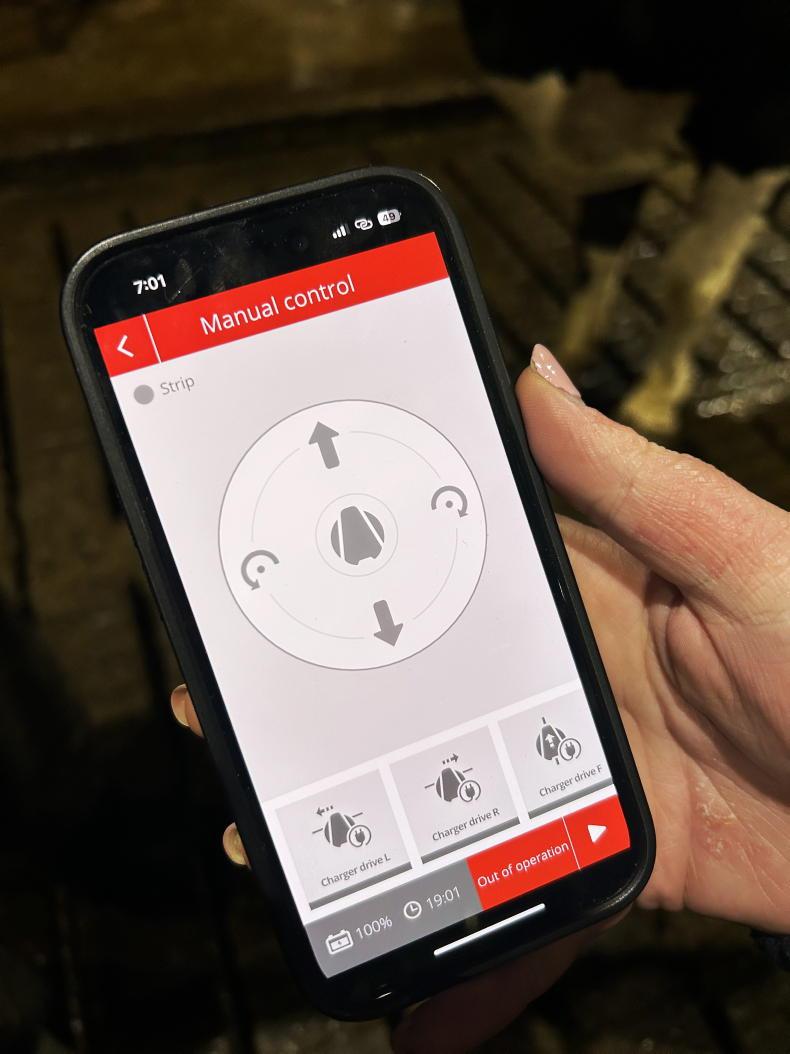
The Control Plus app allows the user to monitor many metrics.
“Now three and a half years on, the Juno has become a critical tool on the farm, no different than the Lely Collector and its role in keeping passages and slats clean,” Derek said.
“As a result, the herd intake has increased 200kg/day, leaving cows fuller and more content. Based on the additional average performance per cow – at 2l/day over the entire year – it works out at almost 62,880 litres of milk that we wouldn’t have only for the Juno. Based on the increased litres alone, it had itself paid for in 10 months, which is a serious return on investment,” Derek pointed out.
“Other benefits are a reduction in the amount of uneaten feed which is steady at roughly 100kg, any less and we’d say the cows hadn’t enough feed. There is also a fuel saving by not having to run the loader throughout the day to push in feed.
“Running costs have been low overall. Other than replacing the tyres and the battery once, it has worked trouble free. In time, the lower rubber strip will need replaced but that’s inexpensive,” he stated.
Increased cow performance.Reduced waste.Labour saving. Calibration isn’t as straight forward as it is for the Collector. Model: JunoHeight: 110cm-155cm. Weight: 620kg.Push blade height: 63-67cm.Drive: Electric motor (12m/min).Batteries: 12V/55Ah.Run time: 60 mins maximumStarting price: €17,500 plus VAT.
Situated outside the village of Keenagh in Co Longford, the O’Halleran family currently milk 85 cows as part of an indoor robotic milking system which is run alongside their poultry enterprise consisting of 16,500 free-range laying hens.
Having witnessed firsthand the benefits of an automatic feeder pusher, the family invested in a Lely Juno in August 2021.
Background
The O’Halleran farm is very much a family-run business involving Derek and his wife, Shirley, alongside their son and daughter, Keith and Rebecca. Prior to their dairy venture in 2020, sheep, beef and poultry were the enterprises on farm.
The poultry enterprise currently comprises three units totalling 16,500 birds. All eggs on-farm are packed in-house and retailed locally under the O’Halleran Family Farm brand.
Keen to streamline the farm and improve its income, the decision was made to move away from sheep and beef and venture into dairy.
However, with a fragmented land base and already demanding workload from the poultry, a milking robot was the avenue explored.
“We knew that the flexibility of not having set AM and PM milkings would work better with the poultry. Furthermore, our land is fragmented which also limited a grazing setup,” Derek explained.
Now in their fifth year of milk production, the family team calve all year round resulting in a steady 85 cows milking throughout the year through two Lely Astronaut A5 robots.
Feeding
Fresh cows are fed a total mixed ration (TMR) diet comprising grass silage, maize, alkalage, and concentrates. Feeding is now done in the evening using the Keenan MechFiber diet feeder, a task that takes just over an hour from start to finish.
The main aim is to get as much dry matter (DM) into the cows as possible in order to drive production. Therefore, keeping feed pushed in to the feed barrier is crucial, Derek pointed out.
At the beginning, the cows were fed three quarters of the diet at 7pm daily to ensure there was enough feed in front of the barrier all night without overfeeding.
A tyre pusher on the loader was then used in the morning followed by the remaining quarter of the diet which was again pushed in at lunch daily. Overall, Derek felt that the feeding regime was pretty well nailed down.
During summer 2021, Derek had been in contact with his local Lely agent, Lely Centre Mullingar, when the idea of demonstrating a Juno silage pusher was suggested to him.
“My initial reaction was that it was too costly of a luxury to push silage considering we just had installed the second robot and that a few minutes with the loader done the job well enough.
“But, the lads at Lely Mullingar were keen for us to try it anyway and so they came out in August 2021 to set it up.
“By day 10 of the demo, the herd had increased 2l/cow/day on average. This really surprised us as there had been no changes to the diet, they were just eating more, roughly 200kg more per feed,” Derek said.
“We also started feeding in the morning for the simple reason the Juno would work away of its own accord throughout the night.”
This increase in yield quickly changed the family’s opinion on whether or not they were interested in purchasing the Juno. A deal was done and it never left the yard.

Charge time generally takes 1.5 times the run time.
How it works
With more than 17 years’ experience of automatic feed pushing since the first-generation Juno was launched in 2008, Lely now offers its third-generation Juno (J2) which builds on the brand’s years of on-farm learnings.
Main changes to the current generation over old models are a more efficient motor, a stronger skirt and upgraded tyres for improved traction. The J2 also features newer software and can be integrated into the Lely Horizon farm management system.
Beneath the flying saucer-like appearance, the Juno is equipped with two electrically driven rubber wheels and a central dual castor wheel.
The wheel motors are powered via a 12V 55Ah battery which allows travel speeds of up to 12 metres/min. This translates to a maximum run time of one hour on a single charge.
In terms of physical size, the Juno measures 110cm in diameter and from 110cm to 155cm high. In order to have enough mass to push forage it weighs in at 620kg.
The Juno is guided with the aid of a gyroscope (a device which measures orientation), an induction sensor and ultrasound sensor. The raised ultrasound sensor allows the unit to follow walls and the feed barrier at the preset distances. If an obstacle is spotted within its field of vision, it will then veer around it and revert to its original path. In the event that the pusher does come into contact with an object it will hit the collision protector ring and instantly stop it.
A simple but effective feature Derek pointed out is that the collision ring will give cows a light shock if they are licking or obstructing it through the feed barrier.
O’Hallerans’ Juno is equipped with the Flex package which is pretty much standard Irish spec. It includes all the major optional extras such as skirt lifting, left and right pushing, an LED light, and electric bumper protection.
The skirt lift feature allows the Juno to pass small obstacles such as floor railings or improve ground clearance on slopes (up to 15%). When in use, the Juno tilts towards the side in which forage is being pushed as it rotates. This causes the lower rubber wear strip to run on the surface to ensure all forage is moved in the right direction and that it cannot pass underneath.
Metal strips are fixed to the feed passage at set points which the unit uses for reference points when working.
Derek pointed out that he intends to recess the strips into the concrete surface so that they cannot be caught with a bucket or similar.
“The first two pushes are furthest away and generally don’t move much feed. However, the movement and beeping noise stimulates the cows to feed.
“Our feeding area is U-shaped, so it will push on its way out and push on its way back to the charging station, moving in an additional six inches each time. The route takes about 28 minutes.”
In the event that the Juno needs to be manually moved or calibrated, it is done through the Lely Control Plus mobile phone app.
On the app, things such as the push route, push times and push durations can all be monitored and adjusted.
Once back at its docking station, the Juno charges wirelessly until its next scheduled push. The general rule of thumb is that charge time takes 1.5 times the scheduled run time.

The Control Plus app allows the user to monitor many metrics.
“Now three and a half years on, the Juno has become a critical tool on the farm, no different than the Lely Collector and its role in keeping passages and slats clean,” Derek said.
“As a result, the herd intake has increased 200kg/day, leaving cows fuller and more content. Based on the additional average performance per cow – at 2l/day over the entire year – it works out at almost 62,880 litres of milk that we wouldn’t have only for the Juno. Based on the increased litres alone, it had itself paid for in 10 months, which is a serious return on investment,” Derek pointed out.
“Other benefits are a reduction in the amount of uneaten feed which is steady at roughly 100kg, any less and we’d say the cows hadn’t enough feed. There is also a fuel saving by not having to run the loader throughout the day to push in feed.
“Running costs have been low overall. Other than replacing the tyres and the battery once, it has worked trouble free. In time, the lower rubber strip will need replaced but that’s inexpensive,” he stated.
Increased cow performance.Reduced waste.Labour saving. Calibration isn’t as straight forward as it is for the Collector. Model: JunoHeight: 110cm-155cm. Weight: 620kg.Push blade height: 63-67cm.Drive: Electric motor (12m/min).Batteries: 12V/55Ah.Run time: 60 mins maximumStarting price: €17,500 plus VAT. 






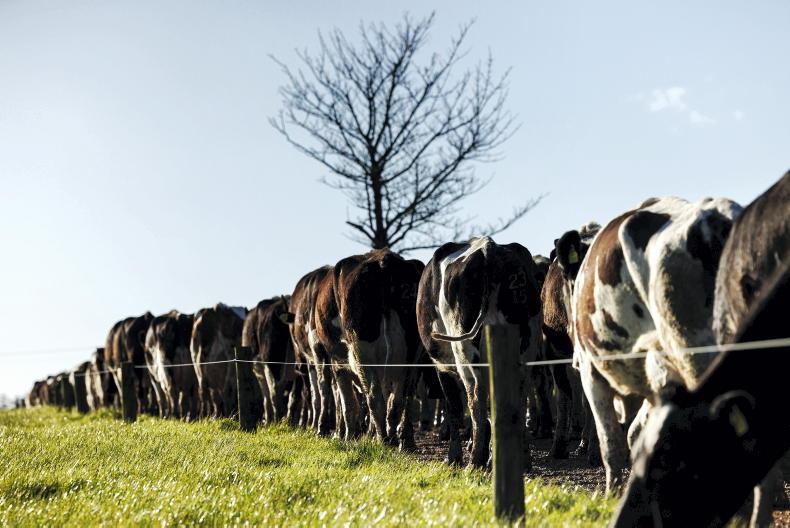
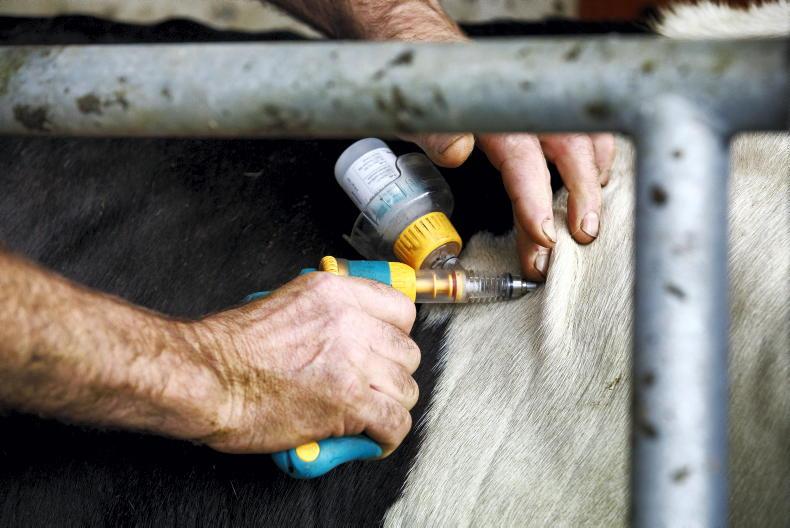
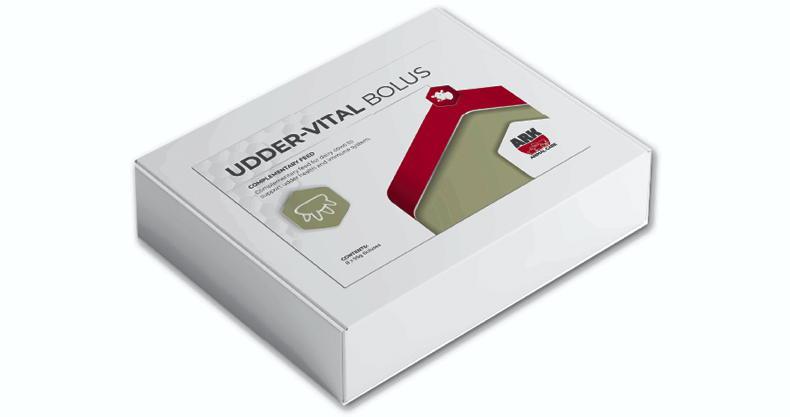
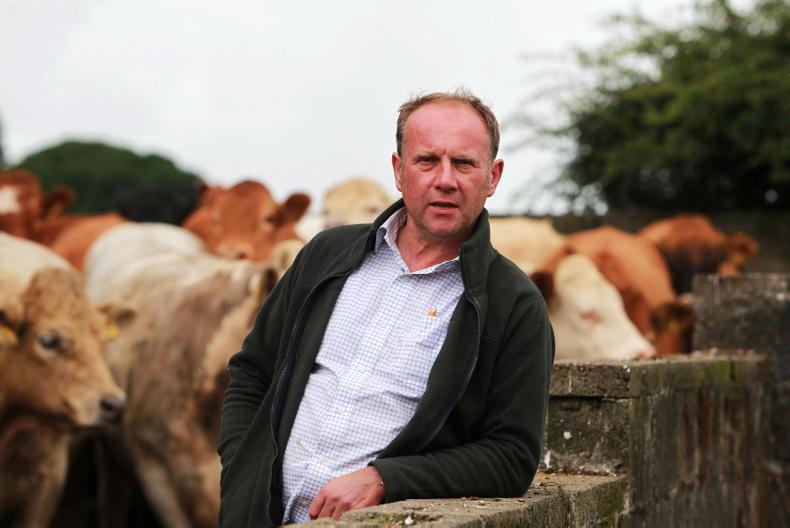
SHARING OPTIONS